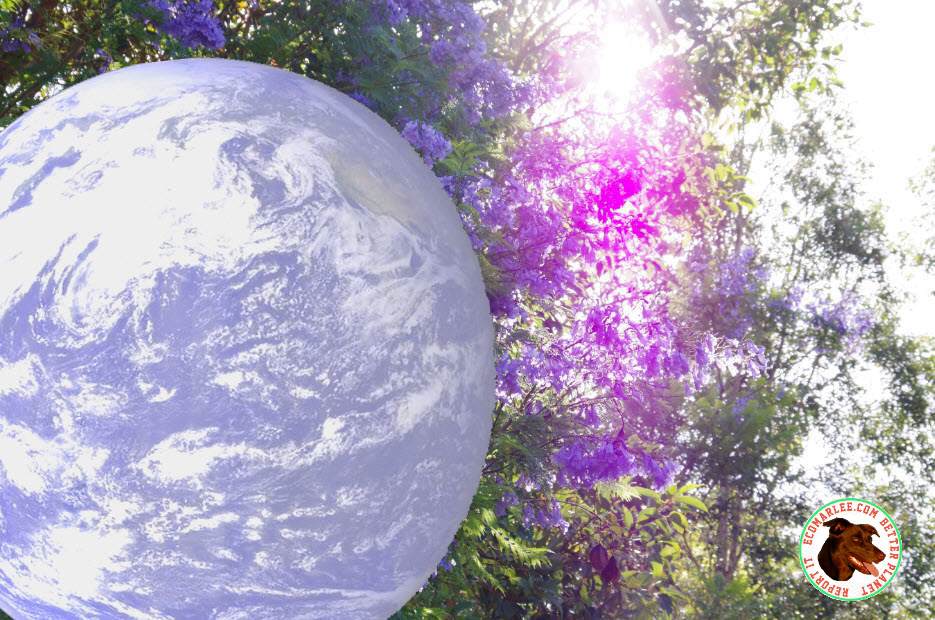Earth Facts

Here are some interesting earth facts about our planet;
Earth fact 1. The earth travels at a speed of 29.77 km hour (on average) as it orbits the sun at a distance of about 150 million kilometers in a circular motion keeping roughly the same distance year-round preventing extreme temperatures.
Earth fact 2. The earth is about 12,756 km in diameter but not perfectly round. Scientists say the earth is a “oblate spheroid”, which is a sphere that experiences flattening at the poles. According to the 2004 Working Group of the International Earth Rotation and Reference Systems Service (IERS), Earth experiences a flattening of 0.0033528 at the poles. This flattening is due to Earth’s rotational velocity – a rapid 1,674.4 km/h (1,040.4 mph) – which causes the planet to bulge at the equator. Because of this, the diameter of the Earth at the equator is about 43 kilometers (27 mi) larger than the pole-to-pole diameter. As a result, the latest measurements indicate that the Earth has an equatorial diameter of 12,756 km (7926 mi), and a polar diameter of 12713.6 km (7899.86 mi).
Earth fact 3. Earth’s tilt of about 23.4 degrees causes the annual cycle of seasons, moderates temperatures, and allows for a wide range of climate zones. “Our planet’s tilt axis seems to be ‘just right,’” says the book Rare Earth—Why Complex Life Is Uncommon in the Universe by Peter D. Ward and Donald Brownlee, 2000, p. 224.
Earth fact 4. The highest place on earth is Mount Everest in the Himalayas on the Nepal-Tibet border , which is 8,848 meters (29,029 ft) above local sea level.
Earth fact 5. The lowest place on Earth (dry land) is the Dead Sea between Israel and Jordon. It is approximately 413 meters (1,355 ft) below sea level. The Marianas Trench in the western Pacific Ocean extending from southeast of Guam to northwest of the Marianas Islands is assumed to be the world's lowest point in the ocean. It has been measured as 36,198 feet (11,034 meters) below sea level.
Earth fact 6. Earth's Atmosphere is a mixture of nitrogen 78%, oxygen 21%, and other gases (1%). (0.9% argon, and 0.03% carbon dioxide, dust particles, pollen, water vapor, dust particles, pollen, plant grains and other solid particles).
Earth fact 7. Earth's hottest year on record was in 2016. (And now 2020 about the same according to NASA) Surface temperatures were the warmest since modern record keeping began in 1880, according to independent analyses by NASA and NOAA. This makes 2016 the third year in a row to set a new record for global average surface temperatures. (Jan 18, 2017).
Earth fact 8. Earth's coldest year on record was in 1909, over100 years ago.
Earth fact 9. Life prevails on planet earth. Just one hundred grams (3.5 ounces) of soil has been found to host 10,000 species of bacteria, (Journal of Industrial Microbiology, “Total Bacterial Diversity in Soil and Sediment Communities—A Review,” by V. Torsvik, R. Sørheim, and J. Goksøyr, Volume 17, 1996, pp. 170-178.) not to mention the total number of microbes. Some species have been found almost two miles (3 km) underground! ( Science, “Environmental Genomics Reveals a Single-Species Ecosystem Deep Within Earth,” by Dylan Chivian, et al, Volume 322, October 10, 2008, pp. 275-278.
The air teams with life containing birds, bats, insects and the atmosphere is filled with pollen and other spores, as well as seeds and—in certain areas—thousands of different kinds of microbes. The diversity of microbial life in the air is “on par with the diversity of microbes in the soil,” says Scientific American magazine. Scientific American, “Microbe Census Reveals Air Crawling With Bacteria,” by David Biello
According to Frederick Grassle of Rutgers University, US, he estimates that there could be up to 10 million species living in the sea.
How long will the earth remain?
To find out visit our page, how long will the earth exist.